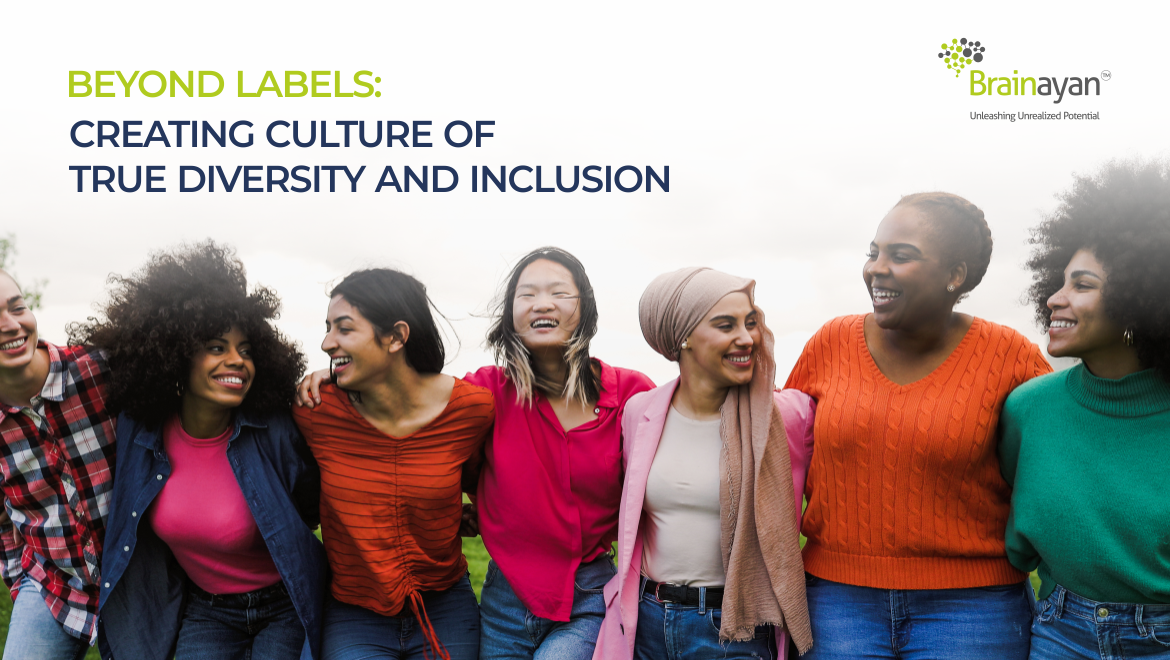Beyond Labels: Creating a Culture of True Diversity and Inclusion

Over the years, the concept of diversity has evolved into an intricate concept, encompassing not only genders, nationalities, ethnicities, racial backgrounds, age, religion, culture, sexual orientation, geographical origin, physical disability, and educational backgrounds but also, skills, strengths, diverse personalities, and value and belief systems. All these elements contribute to the unique identity of each individual. And owing to this definition, diversity is not just a component of your business or organization; it is an integral aspect of your teams.
That’s why research has always emphasized on organizational skillset and practices that are required to convert diversity into an advantage rather than a barrier (Kochan et al., 2003). Likewise, diversity is also found to have a significant constructive impact on group processes (Bear, 2011). However, a passive approach of just hiring a diverse pool of employees without active measures to managing them is likely to fail. Research concludes that organizations that struggle to manage their diversity are more likely to experience negative outcomes such as disruptive conflicts, struggle with inclusion, and an increased turnover over time (Kochan et al., 2003). Unmanaged diversity also contributes to hostile and discriminatory behavior towards the under-represented population.
The recommended approach for managing diversity is a top-down one, where the leadership team plays a crucial role in setting the right mindset and best practices for diversity and inclusion. The BCG Diversity Innovation Survey, conducted by BCG, supports this notion by revealing that significant and positive changes in diversity, inclusion, and innovation stem from the composition of the leadership team, considering factors such as national origin of executives, diverse industry backgrounds, gender balance, and career paths. When upper-level management serves as role models by embracing a mindset and implementing best practices for diversity and inclusion, it sets a strong foundation, allowing these principles to permeate through the organizational structure. As a result, workplaces that prioritize diversity and encourage inclusion are more likely to foster a positive and contented environment.
Some important tips from various entrepreneurs and organizational leaders are:
- Thinking of diversity like a new perspective for ‘connecting the dots’ for the same issue: Encourage teams to leverage their diverse backgrounds, experiences, and perspectives to approach challenges creatively and find innovative solutions.
- Efforts for reducing structural biases and glass ceiling effects: Actively identify and address biases in hiring, promotion, and decision-making processes to ensure equal opportunities for all employees.
- Encouraging personal growth and development for individuals: Create a supportive environment that fosters continuous learning to empower the majority employees to be more accommodative, and minority employees to be more participatory.
- Create more cross-functional teams: Form teams with members from different departments and areas of expertise to provide teams with more exposure to others who think differently.
- Encourage self-awareness about biases that you show: Foster a culture of introspection and openness where employees can recognize and challenge their own biases to create a more inclusive workplace.
While upper management plays a critical role in setting the tone and establishing policies and initiatives related to diversity, it is not solely their responsibility to ensure a diverse and inclusive workplace. The responsibility extends to every individual within the organization, regardless of their position or role. Each employee has the power to contribute positively to the culture of diversity and inclusion by actively participating in and supporting initiatives, demonstrating inclusive behavior, and challenging biases and stereotypes.
As an individual, here’s how you can contribute:
- Embrace difference: appreciate the differences in backgrounds, experiences, and perspectives among colleagues. Encourage open discussions that value diverse viewpoints.
- Promote inclusive behavior: Ensure that interactions with colleagues are respectful and inclusive. Avoid exclusionary practices and language that may alienate others.
- Act as allies: Stand up for colleagues who may face discrimination or exclusion. Be an advocate for inclusivity and support others in their professional growth.
- Lead by example: Demonstrate inclusive behavior to inspire others and create a positive impact throughout the organization.
By taking individual responsibility and actively contributing to a culture of diversity and inclusion, employees can collectively create a workplace that is more innovative, supportive, and respectful of all its members.
References:
Kochan, T., Bezrukova, K., Ely, R., Jackson, S., Joshi, A., Jehn, K., … & Thomas, D. (2003). The effects of diversity on business performance: Report of the diversity research network. Human Resource Management: Published in Cooperation with the School of Business Administration, The University of Michigan and in alliance with the Society of Human Resources Management, 42(1), 3-21.
Bear, J. B., & Woolley, A. W. (2011). The role of gender in team collaboration and performance. Interdisciplinary science reviews, 36(2), 146-153.
https://www.bcg.com/publications/2018/how-diverse-leadership-teams-boost-innovation
https://www.weforum.org/agenda/2021/11/why-diversity-within-your-organization-matters/

With a master’s in clinical psychology, Aasawari specializes in behaviour and mindset change, leveraging her understanding human behaviour to bring about personal and professional transformations. As a passionate researcher, she delves into the latest studies and findings to create insightful and evidence-based blog articles. She strives to bridge the gap between theory and practice by simplifying complex research to provide practically actionable recommendations.